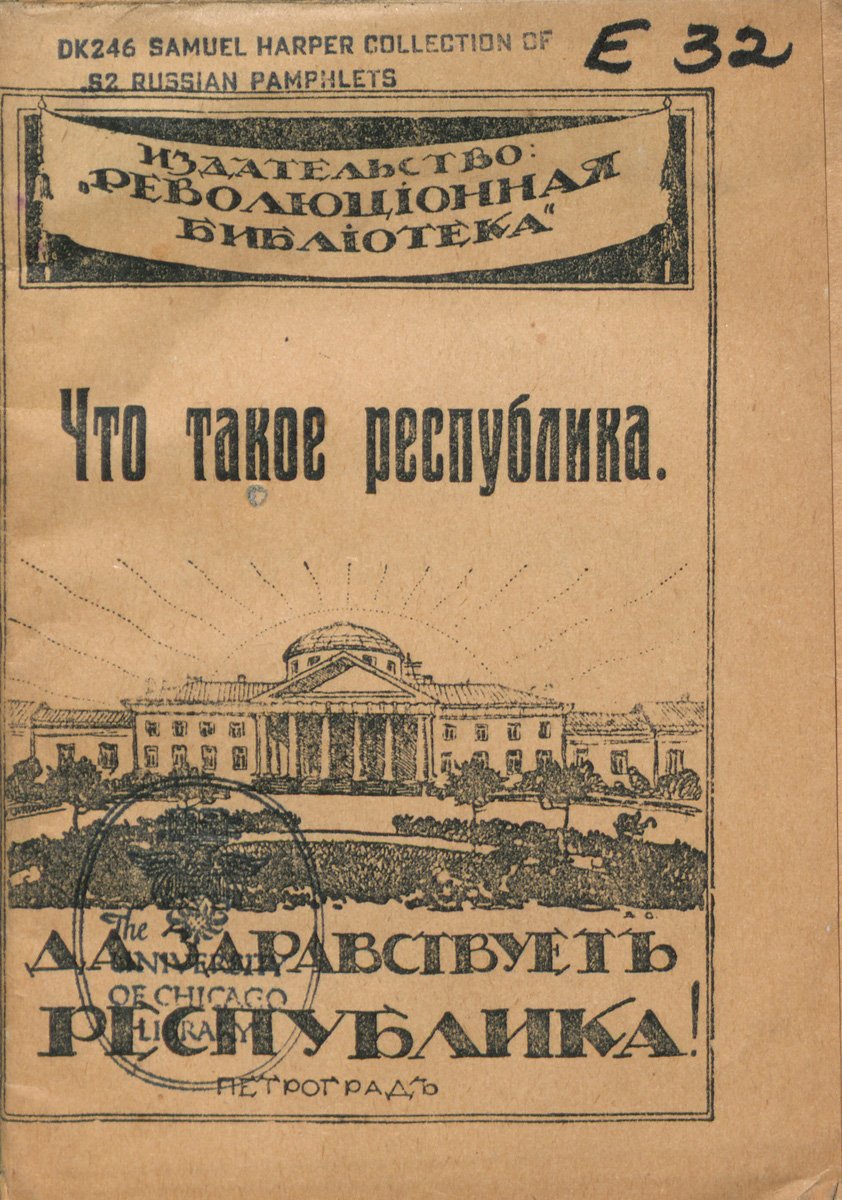Explanatory Power
The February Revolution brought new terms to the forefront of public debate, and with them a struggle over their meaning, often for the purported benefit of the mass reader. In his pamphlet displayed here, L. Kin notes the omnipresence of the words “democratic republic” on flags in street demonstrations, but wonders if people know what they mean. At least ten different pamphlets with the title What is a Democratic Republic? offered answers in 1917, while another ten asked What is Socialism?
The naïve political subject is often both addressee and hero in these texts. Aleksandra Kollontai notes that the new political parties in Russia all promise something to the peasants and workers, but that it is hard for the latter to distinguish between friends, enemies, and wolves in sheep’s clothing. In What is the Bourgeoisie? M. Dobrov reports that workers on the Volga have begun talking of the Bargeousie—owners of barges, while another variant associates the term with the birzha, or Russian stock exchange; but the more educated are also guilty of misusing this word, according to Dobrov. Bolshevik papers, for instance, have been describing opposing socialist parties as petite bourgeoisie in nature, a designation that Dobrov suggests is equally suited to Lenin himself, to many who had made great sacrifices for the revolution. The masses, he argues, are more capable of seeing the living person in front of them than they are of applying this abstract term. The ad hominem attack would continue to be used by the architects of Bolshevik discourse, at times with dire consequences for the working masses. In Who Are the Social Democrats and What Do They Want?
Another large group of pamphlets examined other governments as possible models for Russian development. Il’ia Ignatov published a series on the government structures of England, France, and the United States. In the latter he makes much of the distinction between state and federal authority, but does not venture to comment on how this might work in Russia. Olgovich takes up this problem, also with a focus on the United States, linking its successful model of federalism to its strong legal system. Others, such as Parchevskii’s analysis of the role of the president in a democratic government, examined particular institutions. Vladimir Sviatlovskii examined the possibility of a state without such structures, drawing on Proudhon and Kropotkin. What Does the S.-D. Worker’s Party Strive For? represents an entirely different approach, setting forth in popular language the Social Democrats Party’s program, which included an 8-hour workday, universal education to the age of sixteen, and full equality for all citizens regardless of gender, religion, race or nationality.


